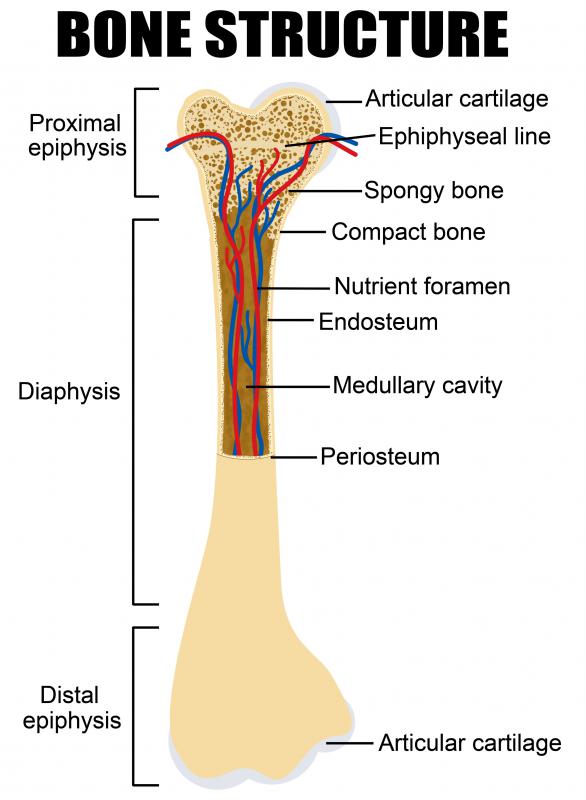At WiseGEEK, we're committed to delivering accurate, trustworthy information. Our expert-authored content is rigorously fact-checked and sourced from credible authorities. Discover how we uphold the highest standards in providing you with reliable knowledge.
What is a Slipped Capital Femoral Epiphysis?
A slipped capital femoral epiphysis is a hip injury that typically occurs in adolescents shortly after puberty. The head of the femur slips or fractures at the base of the hip joint, causing it to move out of place. Several factors can contribute to a slipped capital femoral epiphysis, though the main cause is rapid growth in the bones of the leg due to spurts and hormonal changes. The condition can be painful and in severe cases debilitating. Surgeons can usually move the femur back into place and secure it with specialized screws to promote recovery.
The neck and head of a developing femur are connected by a growth plate that allows the bone to lengthen and fit into place in the hip. When a slipped capital femoral epiphysis occurs, the bone separates at the growth plate and becomes displaced. While the head of the bone is still connected to the joint, the rest of the femur is forced outward.

The growth plate is relatively weak and susceptible to injury. A growth spurt can put excess pressure on the area, leading to a slippage. Adolescents who run track or play high intensity sports are at an increased risk of femoral injuries due to chronic strain on the legs. Obesity and rheumatoid arthritis can also contribute to the onset of a slipped capital femoral epiphysis.

An adolescent who suffers a slipped capital femoral epiphysis is likely to have constant pain in the hip and knee, a limited range of motion, and difficulty bearing weight on the leg. The hip usually feels stiff and very tender to the touch. Depending on the severity of the slippage, the leg may obviously look like it is out of place. A slipped capital femoral epiphysis that is not detected and treated right away can potentially cause lifelong mobility problems.

An individual who suffers a sports injury or complains of hip pain should be brought to a doctor as soon as possible to receive a proper diagnosis. A physician can examine the hip, ask about symptoms, and take an x-ray of the joint to confirm a slippage. Once the doctor studies the location and severity of the injury, he or she can discuss treatment options.

Treatment largely depends on the extent of bone damage and the severity of symptoms, but surgery is usually a necessity. A surgeon can remedy a relatively minor slippage by manually forcing the bone into alignment and affixing it to the growth plate with pins or screws. If the bone is entirely separated and badly damaged, a surgeon may need to cut away a piece of the femoral neck and permanently secure the remaining tissue together with large pins. A patient typically needs to use crutches for several months to give the leg time to heal. Once it starts feeling better, physical therapy sessions can help to rebuild strength and flexibility in the hip joint.
AS FEATURED ON:
AS FEATURED ON:















Discuss this Article
Post your comments